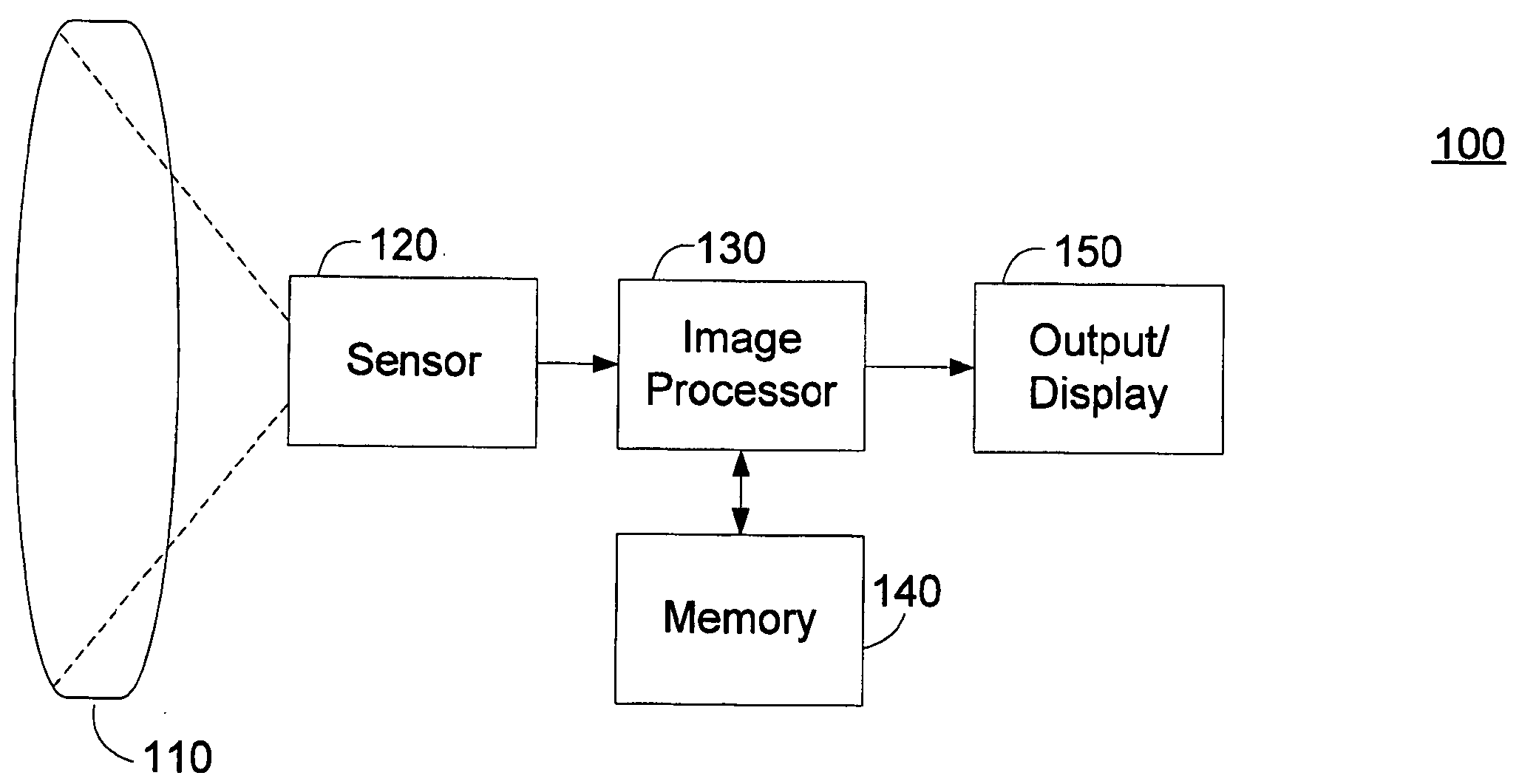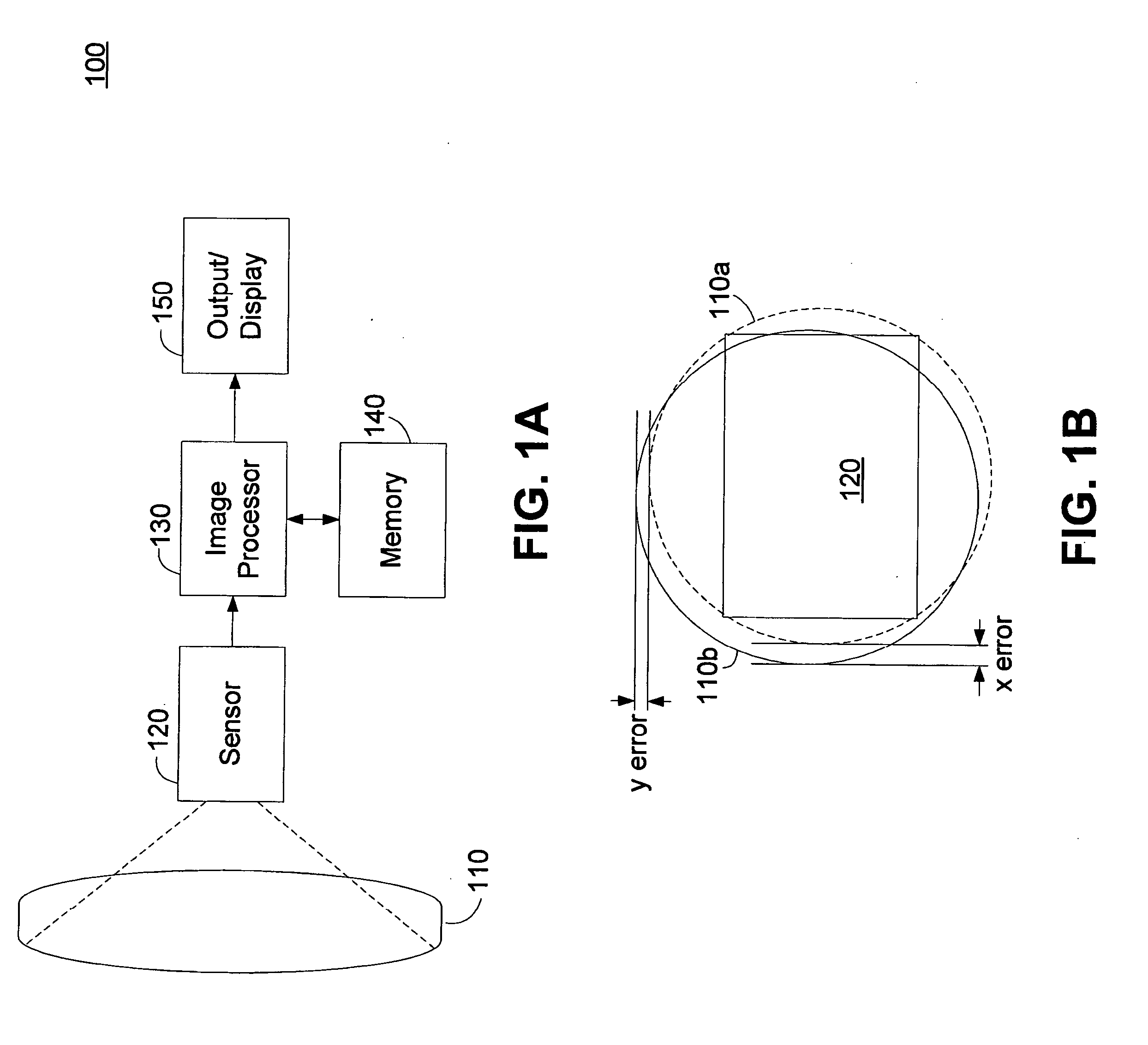Lens roll-off correction method and apparatus
a technology of lens roll-off and correction method, which is applied in the direction of mountings, television systems, instruments, etc., can solve the problems of reducing reducing the performance of lower priced components, and reducing the durability or lifespan of lower priced components
- Summary
- Abstract
- Description
- Claims
- Application Information
AI Technical Summary
Benefits of technology
Problems solved by technology
Method used
Image
Examples
Embodiment Construction
[0021] In wireless telephones having a camera capability, the choice of the lens and accompanying sensor can markedly affect the cost of the wireless phone and the image quality that can be captured with the camera. typically, the lens and sensor implemented within a phone are physically small in order to maintain the small dimensions expected of a wireless phone.
[0022] The lens roll-off or shading problem is a common problem for cameras with a small lens. For mobile applications, the lens roll-off problem is particularly severe because of the small size and low quality lens. The common roll-off problem is the image brightness near the corners is lower than the center. Additionally, a captured image may show color tone shift. Due to the lens mounting inaccuracy, the optical center of the lens is often not aligned with the image center, causing the image to show asymmetric brightness roll-off between two opposite corners.
[0023] The photo diode structure of the sensor is also a fact...
PUM
 Login to View More
Login to View More Abstract
Description
Claims
Application Information
 Login to View More
Login to View More - R&D
- Intellectual Property
- Life Sciences
- Materials
- Tech Scout
- Unparalleled Data Quality
- Higher Quality Content
- 60% Fewer Hallucinations
Browse by: Latest US Patents, China's latest patents, Technical Efficacy Thesaurus, Application Domain, Technology Topic, Popular Technical Reports.
© 2025 PatSnap. All rights reserved.Legal|Privacy policy|Modern Slavery Act Transparency Statement|Sitemap|About US| Contact US: help@patsnap.com



